Download to read offline
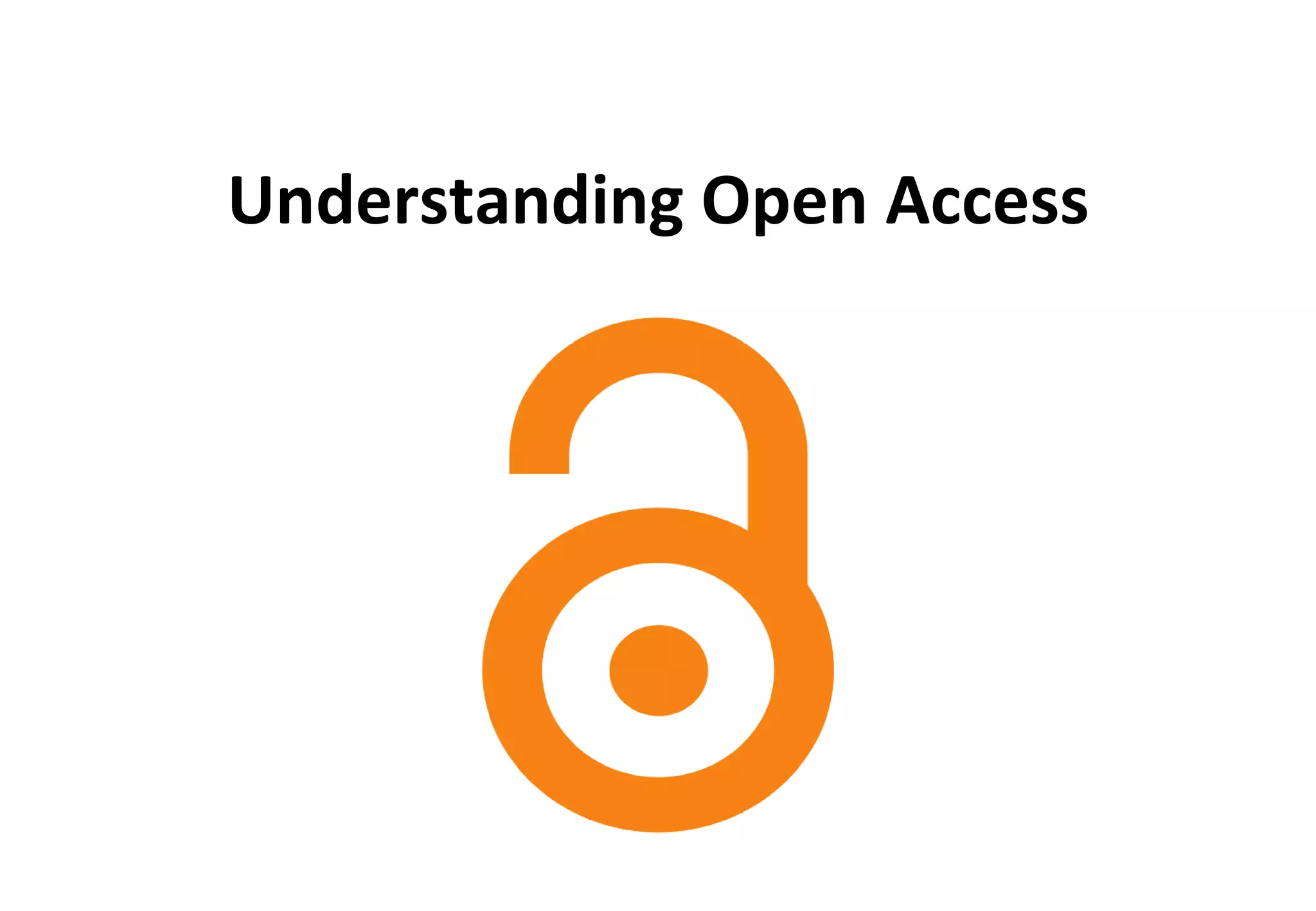
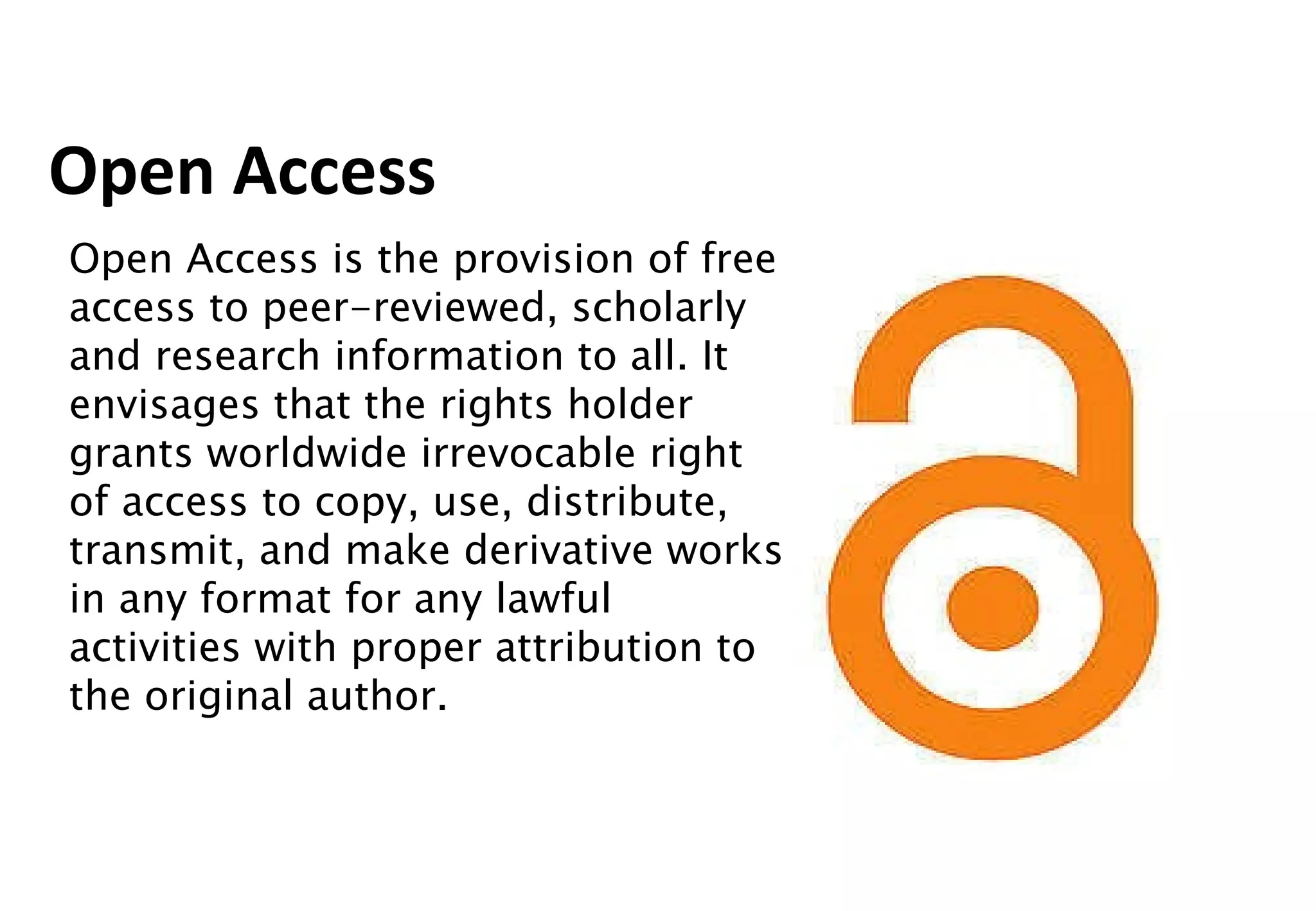
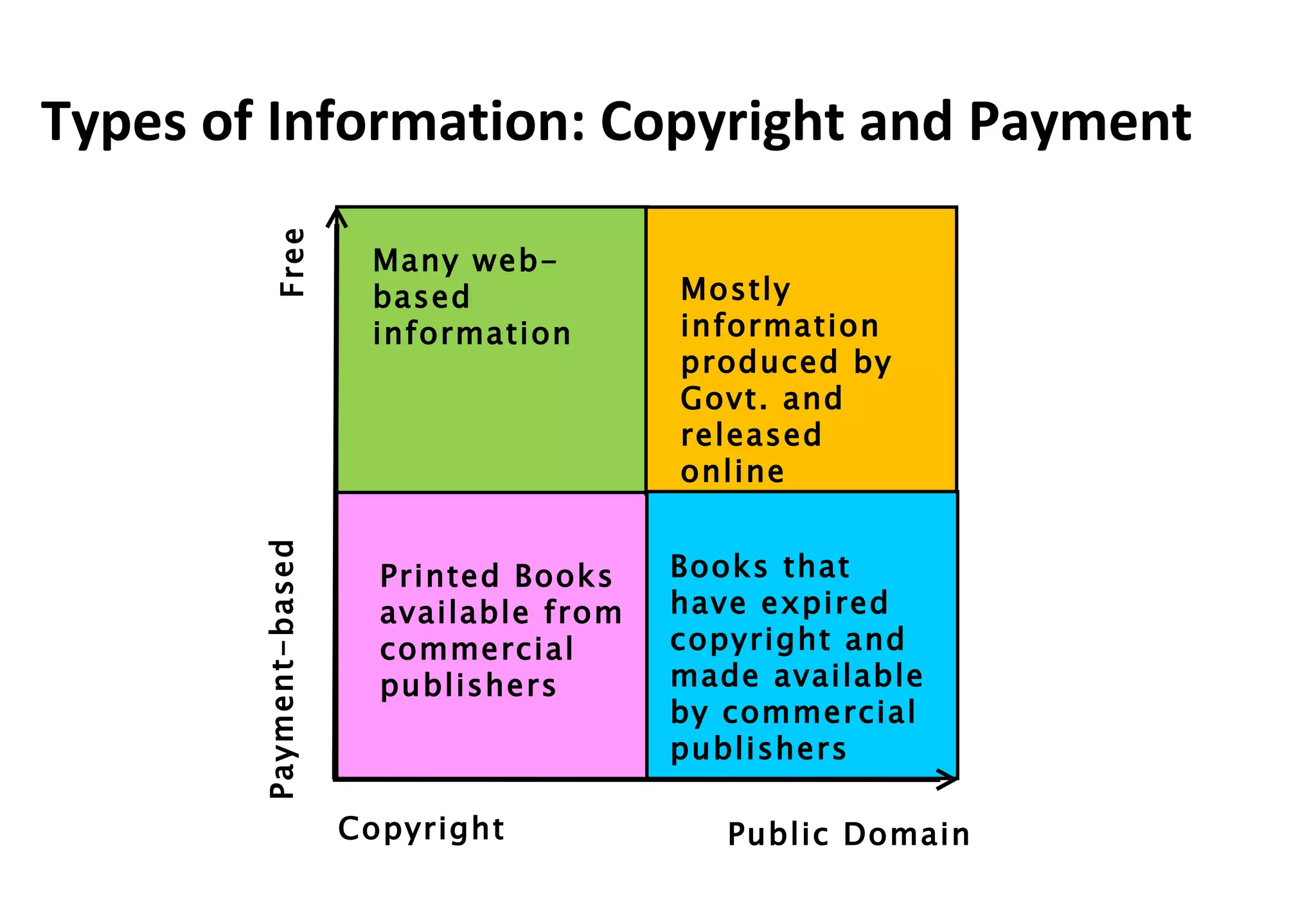
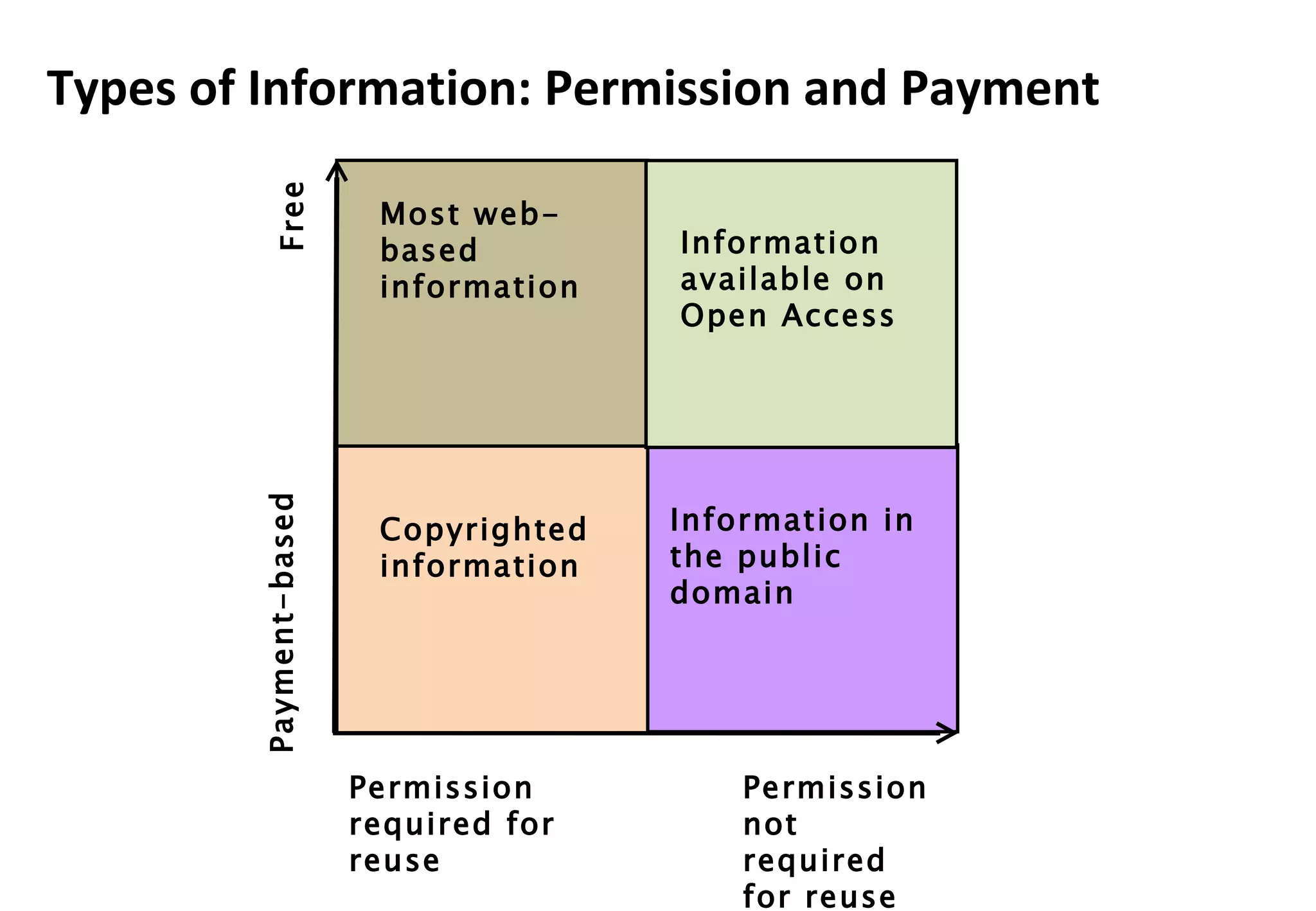

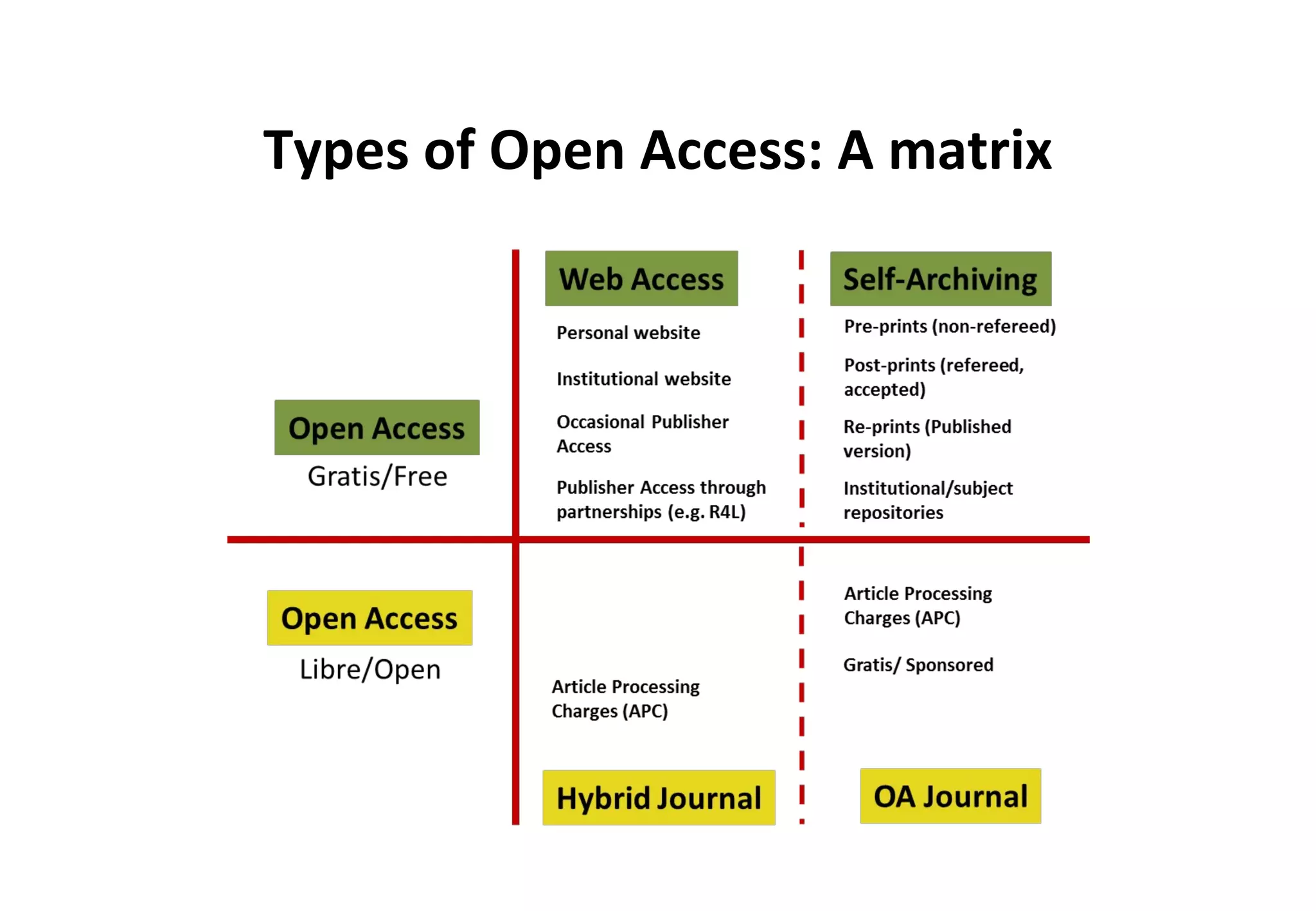
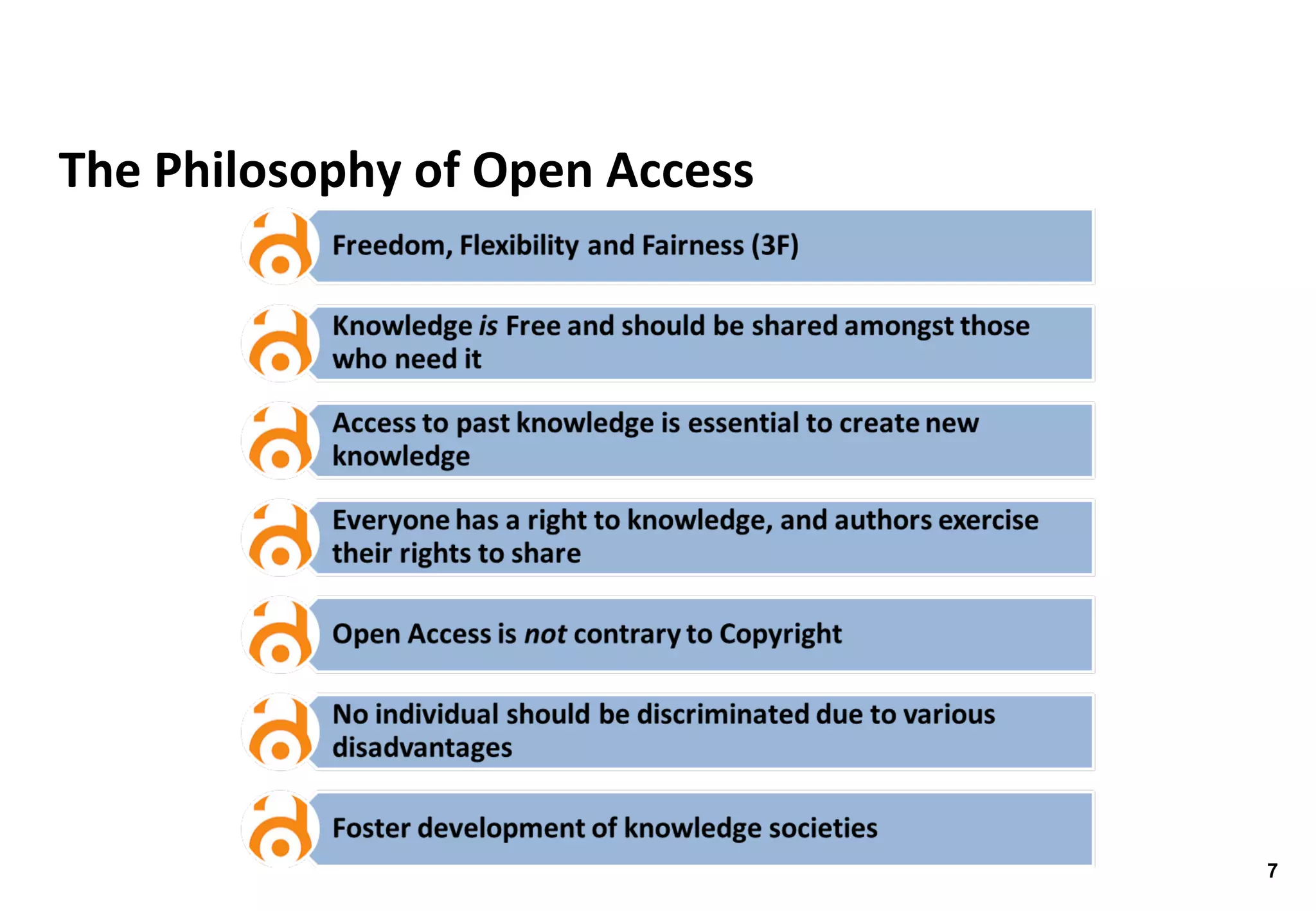
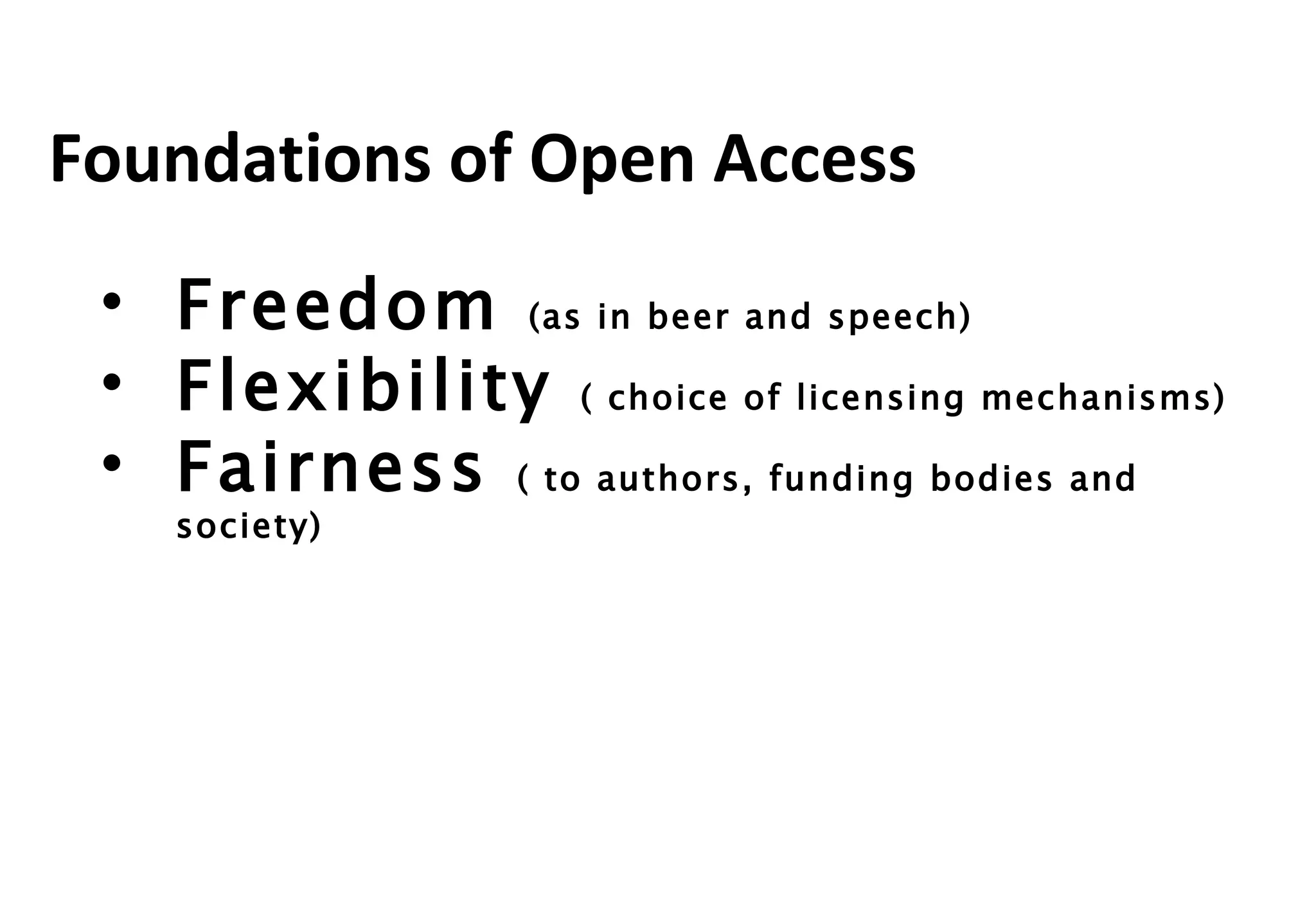


Open Access provides free access to scholarly research and information for all. It allows authors to grant worldwide rights to copy, distribute, and make derivative works from their work as long as they are properly attributed. There are different types of Open Access, including works that are freely available with permission from commercial publishers, information produced by governments and released online without restrictions, and books whose copyrights have expired. Open Access aims to increase the sharing of knowledge and research through flexible licensing and by making information more widely available through new technologies and strategic policies.








